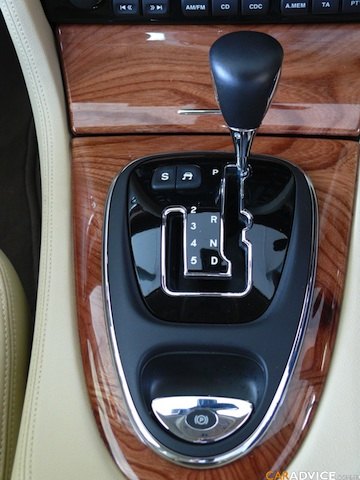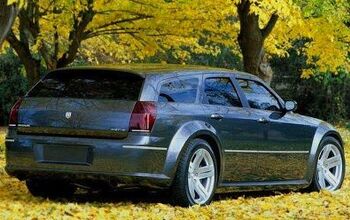Piston Slap: Design Week: Crooked Shift Patterns

TTAC Commentator Karl_Donina writes:
Hi, Sajeev. I want to know why it’s so fashionable for automakers to provide obnoxiously labyrinthine automatic shifter gates. It seems to have started with Jaguar’s innocuous J-shaped gates of the ’80s, but these days it seems to have become passé to provide a simple, easy-to-use linear gate — push button or hold lever to one side to move in a straight line out of park and through the gears, or back the other direction. Now every shift, whether from 1 to 2 or N to R or whatever, requires inconsistent and annoying fore-aft and transverse movements. The gates on Subarus I’ve driven lately are ridiculous, as is the one in the Yaris I rented last week. And there are many more. Thanks for whatever enlightenment you can provide.
Sajeev answers:
Indeed, the Jaguar “J-Gate” shifter is a curiosity that adds to the brand’s charm. Luckily, those gear “detents” also serve a purpose. According to Wikipedia (http://en.wikipedia.org/wiki/Detent), a detent is a “device used to mechanically resist or arrest the rotation of a wheel, axle or spindle.”
In this case, detents save the expensive transmission/transaxle in your car. And the detents make holding a specific gear quite easy, if all ratios are covered on the shift pattern. Imagine if the Lexus IS-F had a zig-zag pattern covering all eight gears…how cool would that be?
But all automatic shift levers have detents, and the last of the “linear” detent shifters use button-actuated lockouts to keep someone from accidently shifting into neutral, reverse or a lower gear. And I suspect the deletion of that button saved the automakers (collectively) millions of dollars. Hence the detents became automotive gospel.
Bonus! A Piston Slap Nugget of Wisdom:
Revisionist History Alert: the Etch-A-Sketch detents are a necessity with today’s plastic-craptastic interiors and glass-jaw transmissions. Take my first car, a 1965 Ford Galaxie 500: it had RoboCop-amounts of metal in the shifter, connected to the unquestionably durable Ford C6 autobox.
When I moved the shifter one detent, I felt that sweet action in my finger bones. It was cool, plus it took dedication to put the transmission in the wrong gear at the wrong time. While these metal parts burned me in the summer and caused wintertime shivering, it worked. And I never had to hear that awful racket from today’s plastic shifter detents.
[Send your queries to mehta@ttac.com]

More by Sajeev Mehta
Latest Car Reviews
Read moreLatest Product Reviews
Read moreRecent Comments
- Poltergeist I expect this will go over about as well as the CR-Z did 15 years ago.
- Michael S6 Welcome redesign from painfully ugly to I may learn to live with this. Too bad that we don't have a front license plate in Michigan.
- Kjhkjlhkjhkljh kljhjkhjklhkjh A prelude is a bad idea. There is already Acura with all the weird sport trims. This will not make back it's R&D money.
- Analoggrotto I don't see a red car here, how blazing stupid are you people?
- Redapple2 Love the wheels


































Comments
Join the conversation
I had to shake my head at the unnatural muscle movement required for column shifters. It's all muscle memory - if you drive only a column shift, you'll get used to it. I rode once with a fellow worker (whose own car was a column shift auto) in a console shift company car for several stops. Every time he stopped, my co-worker "shifted" the wipers on. It took him four stops to figure it out. Everybody has a shift-confusion story, and it's not just the shift pattern. But just a reminder: it doesn't matter where the shifter is placed, on the column or on the dash, the consoles are not going away. They're getting bigger and more sculpted so there's only one place the driver and front passenger can sit, right in front of the airbags. The days of roomy front seats with plenty of leg room (and foot room for my size-13s) are over.
Contrary to popular belief, it was not a Federal regulation that caused Chrysler to drop the pushbutton transmission controls after the 1964 model year. There was no Federal agency or framework under which for such a regulation to be promulgated or enforced until 1968. In fact, Chrysler dropped the pushbuttons because driver training programs (i.e., school districts, at that time) were avoiding Chrysler products because they considered the buttons nonstandard. Chrysler felt that a new driver's first exposure was crucial to forming later car preferences, and so went to a conventional lever. Auto safety advocates of the time (*koff*Nader*koff*) actually preferred the buttons, because they eliminated a potentially very hazardous protuberance on which unbelted occupants could impale themselves, and took shift control out of range of the grabbing hands of (unbelted) children.
There were a few loosely-coordinated voluntary industry actions, such as the universal application of the 7" round sealed beam headlamp in 1940 and the provision of seatbelt anchorages in 1962. In the few years prior to the establishment of the National Highway Traffic Safety Administration and the system of Federal Motor Vehicle Safety Standards, various state and municipal governments effectively forced things like the installation of reversing lamps and the elimination of automatic transmission shift patterns with adjacent forward and reverse driving positions. They did so by writing technical requirements into their bid specifications for their motor pool fleet cars. For several years, the City and County of Los Angeles bought only Chrysler products, for example, because they were the only vehicles that could meet the exhaust emission standards written into the bid spec.
There is nothing in the applicable Federal Motor Vehicle Safety Standard (FMVSS #102) prohibiting pushbutton control of automatic transmissions. Many late-model transit buses are so equipped.